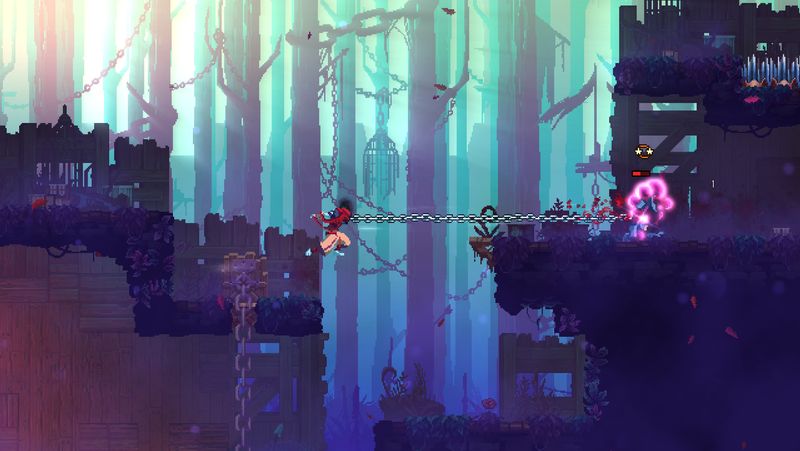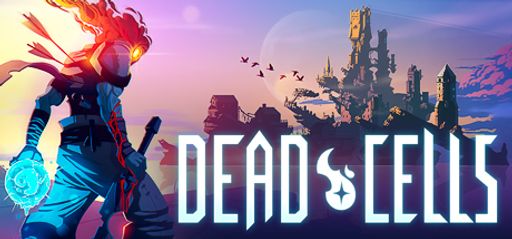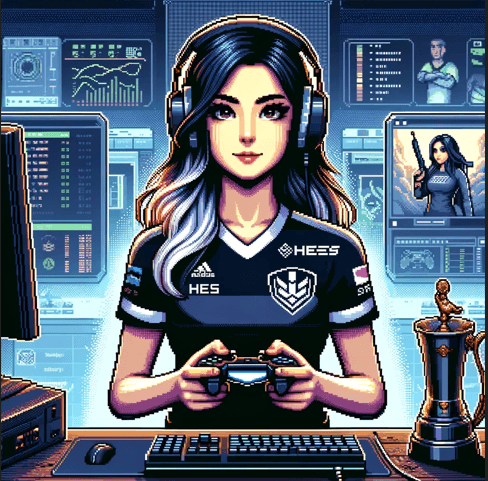 Dead Cells by Motion Twin delivers thrilling souls-lite combat in a roguelite Metroidvania setting; moreover, it hooks you fast. In fact, players note they just keep running. For instance, one review says, “a voice in my head said, ‘one more run.’” Clearly, this matches hardcore gamers’ mentality. Additionally, Motion Twin kept progress and unlocks across runs. Personally, I love its tight combat, dynamic weapon combos, and responsive controls. Furthermore, the travel roll feels perfect in tight fights. Compared to Hollow Knight, Dead Cells pushes high intensity. Importantly, the game runs on Motion Twin’s custom engine with smooth frame rates. Plus, practice mode helps master each biome. Overall, it blends challenge and depth well.
Dead Cells by Motion Twin delivers thrilling souls-lite combat in a roguelite Metroidvania setting; moreover, it hooks you fast. In fact, players note they just keep running. For instance, one review says, “a voice in my head said, ‘one more run.’” Clearly, this matches hardcore gamers’ mentality. Additionally, Motion Twin kept progress and unlocks across runs. Personally, I love its tight combat, dynamic weapon combos, and responsive controls. Furthermore, the travel roll feels perfect in tight fights. Compared to Hollow Knight, Dead Cells pushes high intensity. Importantly, the game runs on Motion Twin’s custom engine with smooth frame rates. Plus, practice mode helps master each biome. Overall, it blends challenge and depth well.
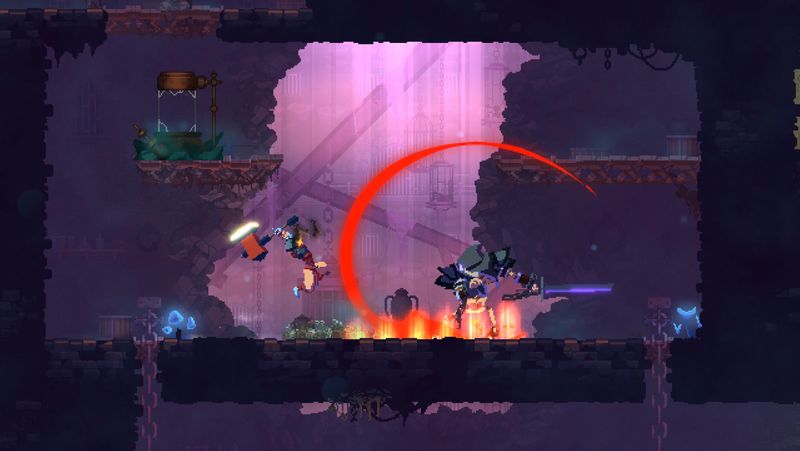
 Conversely, the branching paths in Dead Cells feel alive. Each run, you unlock shortcuts and discover secret areas. Personally, I enjoy mixing grenades, bows, and brutal shields. Furthermore, the environment reacts to your mutations. In developer interviews, Motion Twin revealed they aimed for emergent storytelling through items rather than cutscenes. Consequently, the cursed island lore unravels through NPC dialogue fragments. I love the pace—there’s no filler dialogue, just crisp story beats. Moreover, the narrative hooks you through hidden journals and voice clips. Notably, every biome shows unique lore, like the Prisoner’s Den secrets. Ultimately, it reminds me of roguevania classics but with modern flair.
Conversely, the branching paths in Dead Cells feel alive. Each run, you unlock shortcuts and discover secret areas. Personally, I enjoy mixing grenades, bows, and brutal shields. Furthermore, the environment reacts to your mutations. In developer interviews, Motion Twin revealed they aimed for emergent storytelling through items rather than cutscenes. Consequently, the cursed island lore unravels through NPC dialogue fragments. I love the pace—there’s no filler dialogue, just crisp story beats. Moreover, the narrative hooks you through hidden journals and voice clips. Notably, every biome shows unique lore, like the Prisoner’s Den secrets. Ultimately, it reminds me of roguevania classics but with modern flair.
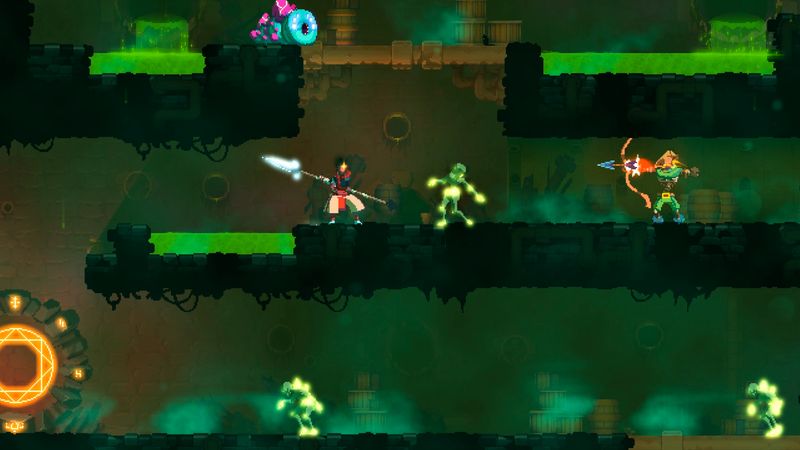
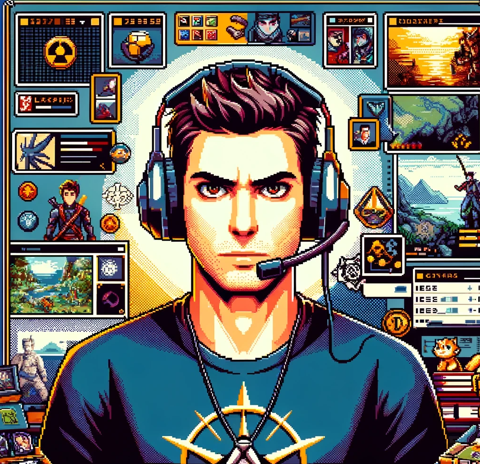 Visually, Dead Cells sports stunning pixel art and vibrant palettes. For example, I often spot subtle parallax layers in each level. Plus, the engine handles animations smoothly on PC, Switch, and consoles. In particular, boss designs ooze style and telegraph attacks cleanly, even despite visual clutter at high difficulty. Additionally, Yoann Laulan’s soundtrack blends dark synths with haunting chimes. Similarly, sound effects nail each sword swipe and mutant screech. Importantly, there is no voice acting to break immersion. Moreover, I find every weapon skin collectible. In fact, the protagonist’s silent design lets you project your own story. Equally, the Keepers boast deep backstories in the lore logs. Overall, I love how every character detail feels earned.
Visually, Dead Cells sports stunning pixel art and vibrant palettes. For example, I often spot subtle parallax layers in each level. Plus, the engine handles animations smoothly on PC, Switch, and consoles. In particular, boss designs ooze style and telegraph attacks cleanly, even despite visual clutter at high difficulty. Additionally, Yoann Laulan’s soundtrack blends dark synths with haunting chimes. Similarly, sound effects nail each sword swipe and mutant screech. Importantly, there is no voice acting to break immersion. Moreover, I find every weapon skin collectible. In fact, the protagonist’s silent design lets you project your own story. Equally, the Keepers boast deep backstories in the lore logs. Overall, I love how every character detail feels earned.

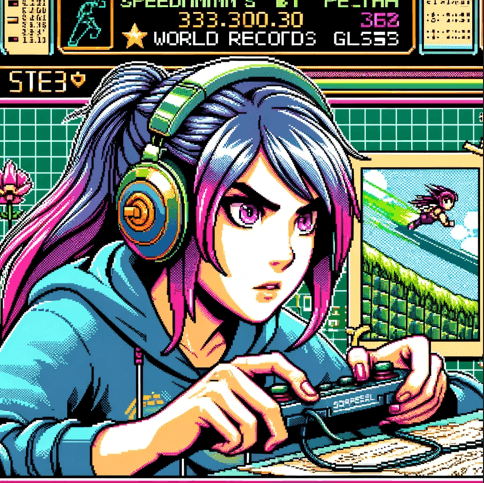 In terms of gameplay, Dead Cells nails challenge spikes and reward loops. Specifically, combat tests muscle memory and split-second decisions. As expected, elite foes punish teleport moves. For instance, one user called it a cardio workout in pixels. As a result, I time panic rolls to skip hordes. Additionally, practice mode boss rush refined my routing. Meanwhile, leaderboards boost competition. Moreover, I use poison traps and hidden warp gates to cut time. Notably, meta progression unlocks new weapons and biomes each run. Also, players can filter loot to ease difficulty or avoid clutter. Consequently, each run feels fresh thanks to mutation variety. Clearly, this roguelite rivals Rogue Legacy in replay value.
In terms of gameplay, Dead Cells nails challenge spikes and reward loops. Specifically, combat tests muscle memory and split-second decisions. As expected, elite foes punish teleport moves. For instance, one user called it a cardio workout in pixels. As a result, I time panic rolls to skip hordes. Additionally, practice mode boss rush refined my routing. Meanwhile, leaderboards boost competition. Moreover, I use poison traps and hidden warp gates to cut time. Notably, meta progression unlocks new weapons and biomes each run. Also, players can filter loot to ease difficulty or avoid clutter. Consequently, each run feels fresh thanks to mutation variety. Clearly, this roguelite rivals Rogue Legacy in replay value.

 Overall, Dead Cells stands out for its tight combat, emergent storytelling, and endless replay loops. In fact, Motion Twin raised the bar for roguevanias. Consequently, it appeals to both hardcore and casual players alike. If you enjoy this style, try Hades for its fast-paced roguelike action and story depth. Likewise, play Hollow Knight for Metroidvania exploration and boss duels. Additionally, check Rogue Legacy 2 for its unique family perk system. If you love brutal pixel art and souls-like combat, try Blasphemous. Alternatively, play Hyper Light Drifter for atmospheric world-building and crisp pixel visuals. Finally, add Dead Cells to your games on Steam!
Overall, Dead Cells stands out for its tight combat, emergent storytelling, and endless replay loops. In fact, Motion Twin raised the bar for roguevanias. Consequently, it appeals to both hardcore and casual players alike. If you enjoy this style, try Hades for its fast-paced roguelike action and story depth. Likewise, play Hollow Knight for Metroidvania exploration and boss duels. Additionally, check Rogue Legacy 2 for its unique family perk system. If you love brutal pixel art and souls-like combat, try Blasphemous. Alternatively, play Hyper Light Drifter for atmospheric world-building and crisp pixel visuals. Finally, add Dead Cells to your games on Steam!
